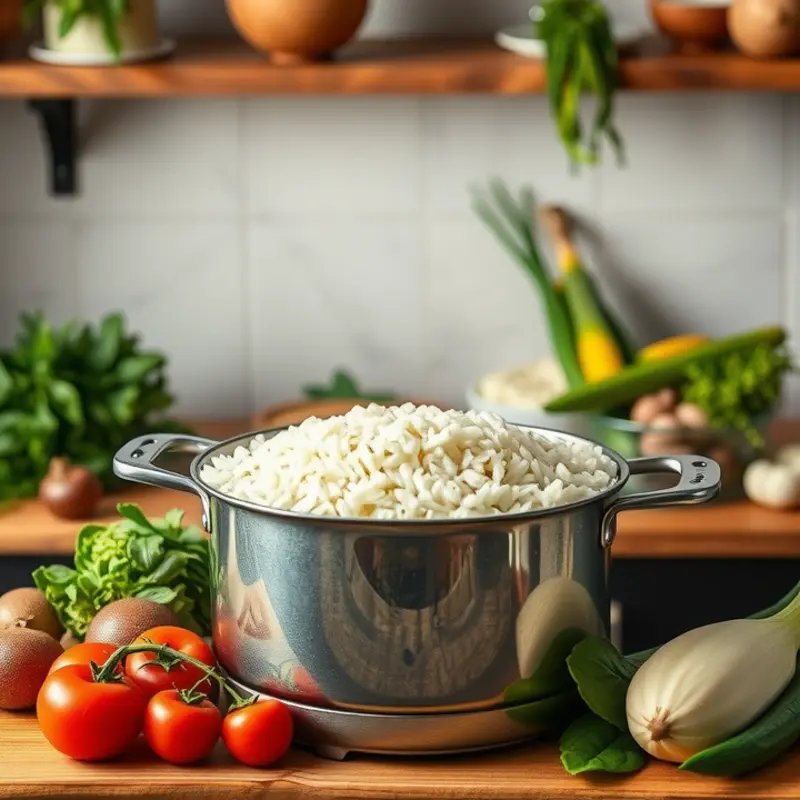Perfectly steamed rice is a staple in many cuisines, yet it can be elusive for home cooks. Whether you’re aiming for a light, fluffy texture or a sticky consistency, understanding the proper techniques can elevate your dishes. This guide offers straightforward methods to achieve restaurant-quality rice at home, ensuring it complements your meals beautifully.
Choosing the Right Rice for Steaming Success

Understanding rice varieties is fundamental to achieving perfectly steamed rice. Each rice type has distinct properties that affect its texture and flavor. By familiarizing yourself with these characteristics, you can select the right rice for any culinary endeavor.
Rice can be broadly categorized into short, medium, and long grain types, each with unique qualities. Short-grain rice is often used in dishes where a sticky texture is desired, such as sushi or risotto. Its high starch content gives it a creamy appearance and clumps together well, making it ideal for recipes requiring a cohesive texture. When steaming short-grain rice, be sure to use the appropriate water-to-rice ratio to avoid overly sticky or mushy results.
On the other hand, medium-grain rice offers a balance between stickiness and separation. It holds shape well but has enough starch to bind slightly when cooked. This makes it an excellent choice for dishes like paella or pilaf, allowing for both flavor absorption and pleasant texture. For best steaming results, rinse medium-grain rice before cooking to remove excess starch, ensuring a fluffier end result.
Long-grain rice, known for its slender and elongated appearance, tends to cook up light and firm. It remains separate when cooked, making it perfect for side dishes, fried rice, or as a base for curries. Jasmine and basmati are popular long-grain varieties known for their fragrant aroma and nutty flavor. Achieving optimal results with long-grain rice involves steaming it with slightly less water than its shorter counterparts, emphasizing its fluffy, distinct character.
Moreover, special varieties like aromatic and colored rice bring additional layers of flavor and visual appeal to dishes. Aromatics like jasmine or basmati complement dishes from Southeast Asian and Indian cuisines, enhancing the culinary experience with their delightful scent. Meanwhile, colored rice types, such as black or red rice, not only offer unique flavors but are also packed with nutrients, adding both taste and health benefits to your meal.
Selecting the right rice involves considering the dish you plan to prepare, as well as the flavor and texture you wish to achieve. Trial and error can also be beneficial—experimenting with different rice types might reveal unexpected combinations and culinary delights. Additionally, how you store rice impacts its quality and shelf-life. For tips on eco-smart kitchen storage, consider resources that promote sustainable practices, such as eco-friendly storage techniques.
In summary, achieving steamed rice perfection hinges on recognizing the properties unique to each rice type. By matching the rice variety to the desired dish, you ensure a delightful culinary experience that celebrates the rich diversity of global rice cultures.
The Perfect Cooking Technique: From Rinse to Steam

To achieve impeccably cooked rice, the journey begins well before the first grain hits the cooking pot. Mastering the rinsing, soaking, and steaming process is crucial to ensure each grain is a fluffy masterpiece.
The first crucial step is rinsing. Rinsing rice is not just about removing dust. It also eliminates excess surface starch, which can cause clumping. Place the rice in a fine mesh strainer and hold it under cold running water. Gently agitate the rice with your hand. Continue rinsing until the water runs clear. This step is particularly important for starchy varieties like sushi rice.
Next up is soaking. Soaking the rice before cooking softens the grains. This allows for even absorption of water, thus preventing raw centers and enhancing the overall texture. Typically, rice should be soaked for about 30 minutes. However, for firmer varieties like basmati, extending the soaking time to an hour can yield better results.
The water-to-rice ratio is pivotal. For different rice types, the ratio varies slightly. A common guideline is 1.5 to 1.75 cups of water per cup of rice. Brown rice generally requires more water to accommodate its denser grains. If you are interested in reducing kitchen waste while perfecting these measurements, consider exploring low-waste cooking preparations.
Setting up for steaming begins with selecting the right cookware. A heavy-bottomed pot or a specialized rice cooker offers even heat distribution, minimizing the risk of burning. Add the rinsed and soaked rice with the accurately measured water, put the lid on, and set the pot over medium-high heat until it reaches a boil. Once boiling, reduce to a gentle simmer. Induction stoves or heat diffusers can help maintain a consistent temperature.
Timing in the kitchen is everything. The duration for steaming rice will differ based on the type. Generally, white rice requires about 18-20 minutes, while brown rice needs closer to 40-45 minutes. During this time, avoid uncovering the pot frequently, as trapped steam is essential for achieving optimal fluffy texture.
After the steaming is complete, allowing the rice to rest is often overlooked but crucial. Remove the pot from the heat and let it sit, covered, for about 10 minutes. This resting period allows the moisture to redistribute evenly among the grains, enhancing the overall texture.
Finally, when the wait is over, gently fluff the rice with a fork. This step separates the grains without mushing them together, ensuring each spoonful is fluffy and delightful. Remember, precision in each step from rinsing to resting makes all the difference in achieving perfection in rice cooking.
Final words
Cooking the perfect steamed rice is a skill that can greatly enhance your meals. By selecting the right type of rice and mastering the cooking techniques, you can create fluffy, delicious rice that serves as a fantastic base or side for various dishes. Remember that practice makes perfect. With these skills, you can confidently prepare meals that impress family and friends alike. Dive into your next cooking adventure and enjoy the journey of mastering the art of rice cooking!







